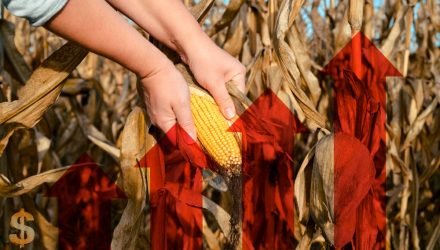According to a Dairy Reporter article, analytics firm Beroe is predicting that corn prices will stay elevated in 2023, giving bullish investors reason to continue using the commodity as a prime inflation hedge or as a portfolio diversification tool.
Beroe cited the ongoing war in Ukraine as a major catalyst for corn prices. Russia’s occupation of the Black Sea continues to pose logistical challenges for Ukraine to export corn, constricting its ability to meet rising demand.
The Daily Reporter article noted that while production has increased by 11% the last five years, it has yet to catch up with demand. This, of course, only exacerbates the global food crisis the world is currently dealing with as the conflict continues.
In terms of consumption, the U.S. and China remain the top consumers of corn. The latter’s re-opening of its economy after prolonged lockdowns due to rising COVID-19 cases should also bolster demand for corn in the country.
Circling back to Ukraine, the Daily Reporter noted that it accounts for 15% of global corn exports, and as such, certain parts of the globe are seeking alternative ways to circumvent the exporter’s conflict with Russia. European farmers, for example, are opting to purchase corn from other places, including South American countries and the U.S.
All these factors should continue to fuel corn prices through 2023. As such, investors may want to look at corn as an inflation hedge, though the capital markets widely expect central banks to start scaling back rate hikes as consumer prices start to reverse course.
Get Convenient, Uncomplicated Corn Exposure
With inflation dissipating, agricultural commodities as an inflation hedge may not be the prime reason for exposure, but in terms of diversification and adding assets uncorrelated to the broad market, they still serve a place in an investor’s portfolio. Teucrium offers a variety of funds for investors looking to get agricultural commodity exposure in a convenient fashion while staying under the regulatory framework of a traditional market exchange.
Investors can also opt to invest in agricultural commodities via futures contracts. However, the time required to understand the futures market may be out of reach for investors, requiring a more convenient, uncomplicated approach.
For getting agricultural commodities exposure via corn, consider the Teucrium Corn Fund (CORN), which tracks three futures contracts for corn that are traded on the Chicago Board of Trade, including 35% second to expire contracts, 30% third to expire contracts, and 35% December following the third to expire. The various contract exposures help the fund limit the negative effects of rolling contracts, especially during a market in contango.
For more news, information, and analysis, visit the Commodities Channel.

